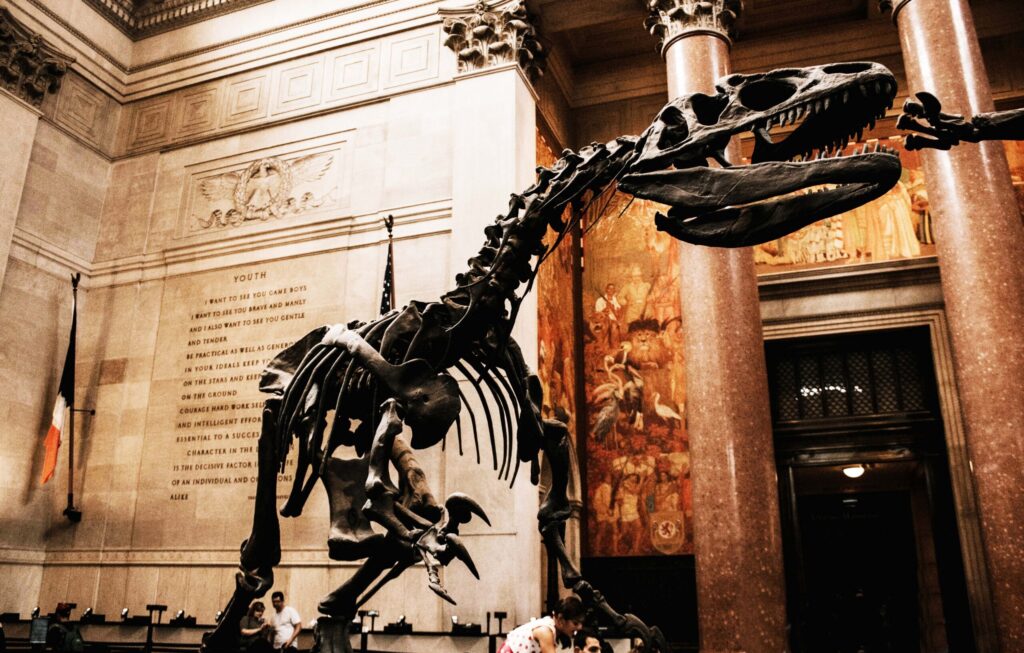 Unearth Fun, Fossils, and Fantastic Learning for Dino-Crazy Families!
Unearth Fun, Fossils, and Fantastic Learning for Dino-Crazy Families!
Embarking on a journey through time and prehistoric wonder, families in the United States can witness the remnants of Earth’s ancient past firsthand–from towering Tyrannosaurus rex skeletons to the mysterious allure of tar pits, the USA boasts a plethora of destinations where dinosaur enthusiasts of all ages can marvel at the wonders of these magnificent creatures.
This guide will take you on a captivating tour of some of the most renowned exhibits and paleontological havens nationwide. Each destination offers a glimpse into the astonishing world and provides enriching educational experiences, making them the perfect settings for family adventures filled with awe, discovery, and learning.
So, prepare to embark on an extraordinary journey through time as we explore these incredible places where the past comes to life, one fossil at a time.
Here’s a list of some of dinosaur places and why they are amazing and educational:
 Smithsonian National Museum of Natural History – Washington, D.C.:
Smithsonian National Museum of Natural History – Washington, D.C.:
-
- Why it’s amazing: The Smithsonian’s dinosaur exhibit boasts an impressive array of fossils, including a Triceratops and a Velociraptor. It also features interactive displays and life-sized dinosaur models.
- Why it’s educational: The museum offers educational programs, workshops, and lectures, making it an excellent destination for families interested in delving deeper into paleontology.
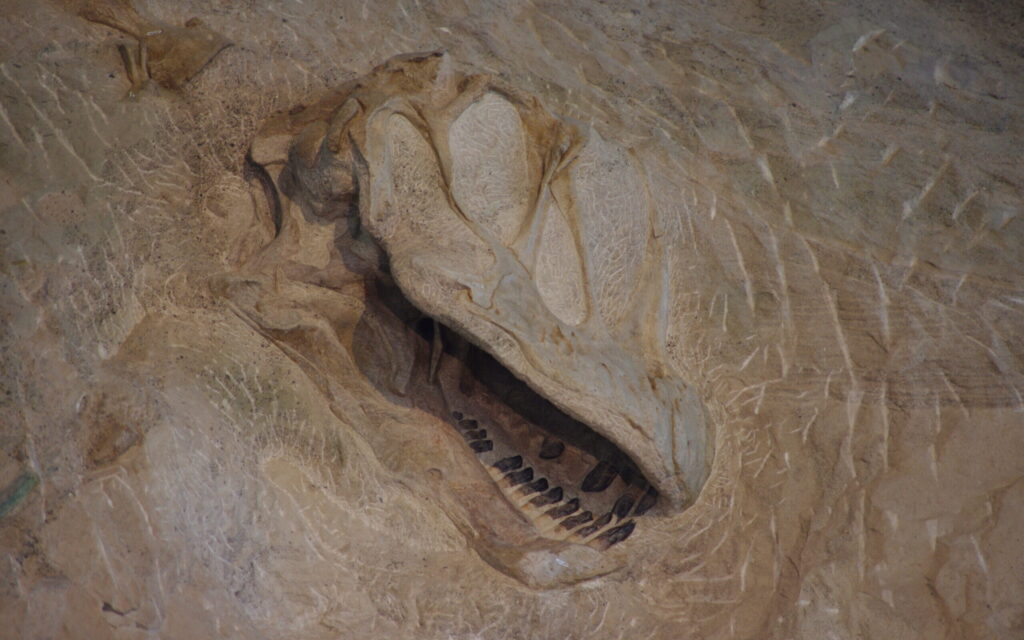 Dinosaur National Monument – Jensen, Utah and Dinosaur, Colorado:
Dinosaur National Monument – Jensen, Utah and Dinosaur, Colorado:
-
- Why it’s amazing: This park straddles the Utah-Colorado border and is home to an extensive skeleton quarry. Visitors can see hundreds of giant fossils embedded in the rock wall, including the famous Allosaurus and Stegosaurus.
- Why it’s educational: Guided tours and visitor centers provide information about the fossils, the geology of the area, and the history of their discoveries.
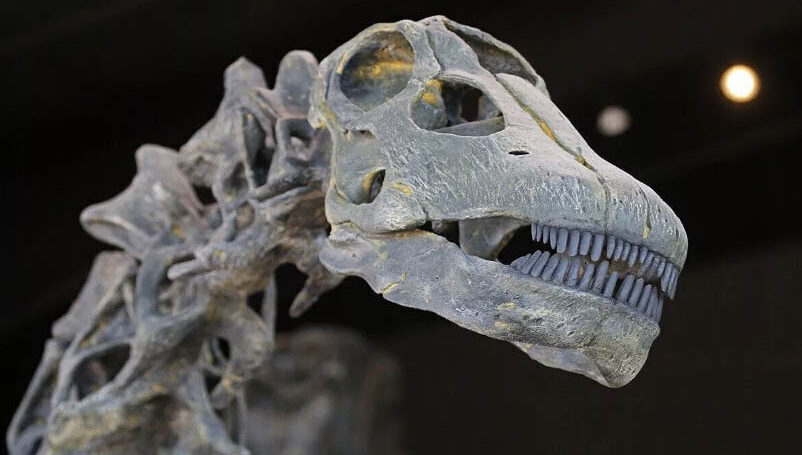 Royal Gorge Dinosaur Experience – Canon City, Colorado:
Royal Gorge Dinosaur Experience – Canon City, Colorado:
-
- Why it’s amazing: This attraction combines entertainment and education with life-sized dinosaur models, interactive exhibits, and a ropes course with dinosaur-themed elements.
- Why it’s educational: Families can learn about the different dinosaur species that once roamed Colorado and participate in educational programs and fossil demonstrations.
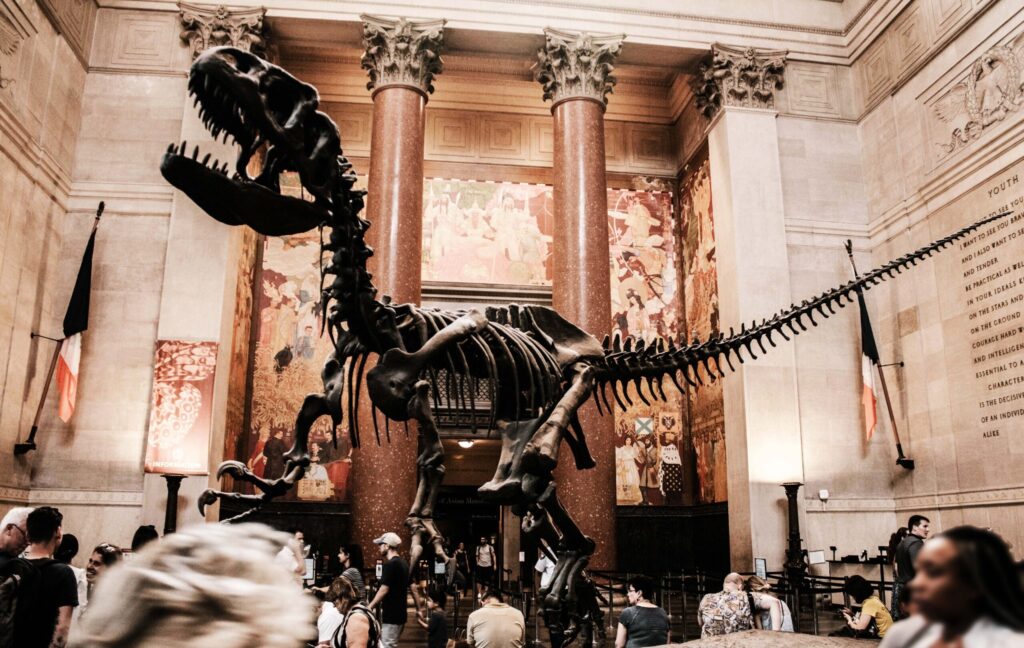 American Museum of Natural History – New York City, New York:
American Museum of Natural History – New York City, New York:
-
- Why it’s amazing: This iconic museum features an extensive dinosaur fossil collection, including the famous Tyrannosaurus rex skeleton. Families can explore various dinosaur exhibits, watch fossil preparation in action, and learn about the evolution of these creatures.
- Why it’s educational: The museum offers interactive exhibits, educational programs, and hands-on activities for kids, making it a fantastic learning experience for all ages.
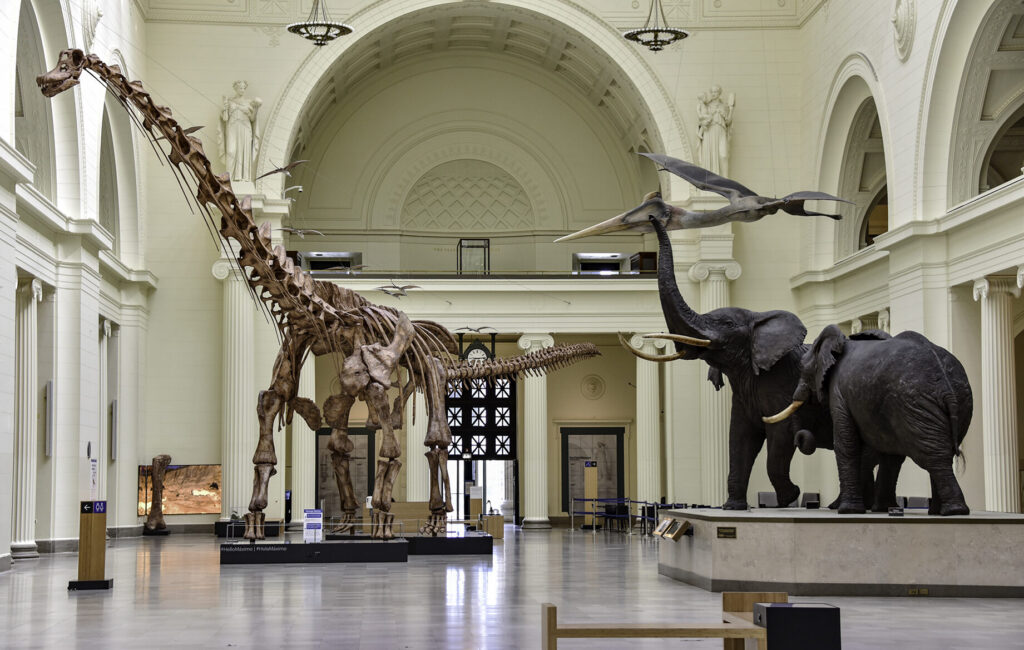 The Field Museum – Chicago, Illinois:
The Field Museum – Chicago, Illinois:
-
- Why it’s amazing: The Field Museum houses “Sue,” the largest and most complete Tyrannosaurus rex skeleton ever discovered. It also has a diverse collection of dinosaur fossils from around the world.
- Why it’s educational: The museum offers workshops, family programs, and interactive exhibits that help visitors explore the world of paleontology.
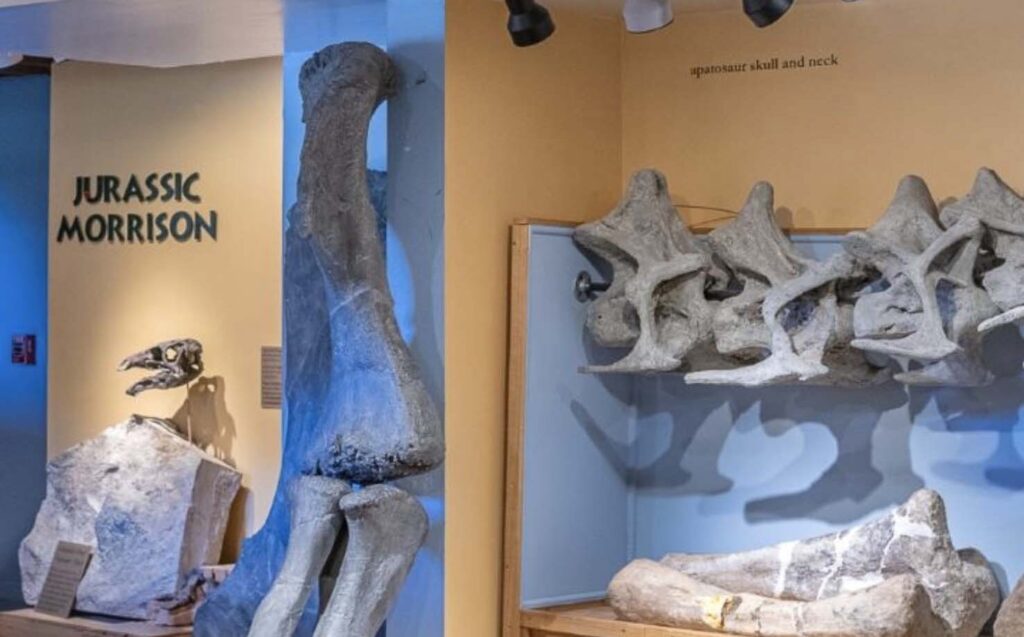 Morrison Natural History Museum – Morrison, Colorado:
Morrison Natural History Museum – Morrison, Colorado:
-
- Why it’s amazing: This small museum near the famous Red Rocks Amphitheatre is a hidden gem. It features dinosaur fossils found in the local area, including the renowned “Big Ed”.
- Why it’s educational: Visitors can participate in hands-on programs, and the museum staff is passionate about teaching visitors of all ages about local prehistoric life.
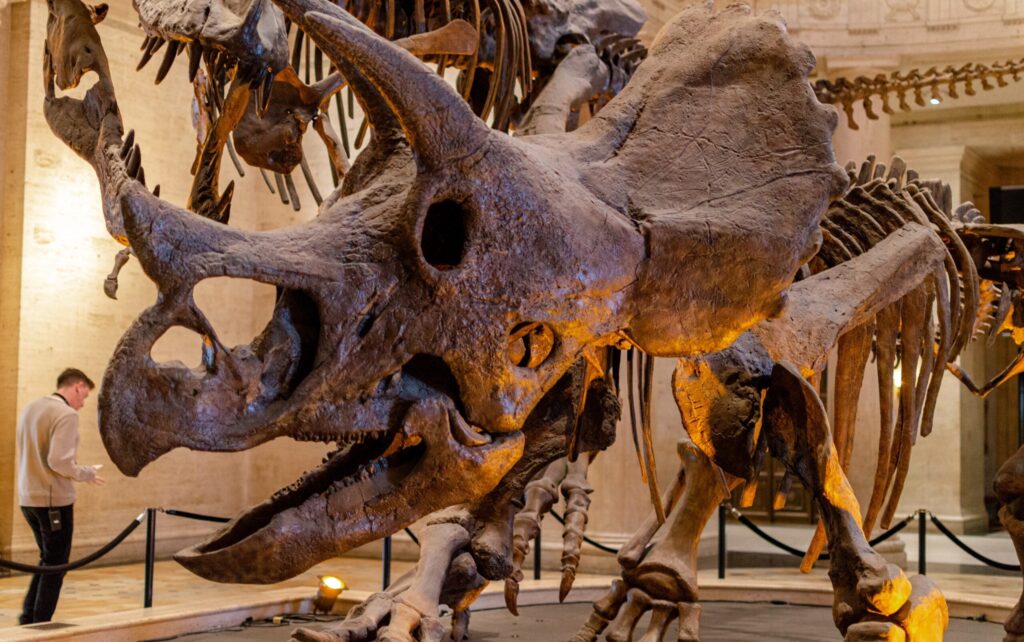 La Brea Tar Pits and Museum – Los Angeles, California:
La Brea Tar Pits and Museum – Los Angeles, California:
-
- Why it’s amazing: While not dinosaurs, the tar pits have yielded thousands of Ice Age fossils, including mammoths, saber-toothed cats, and dire wolves. It’s a unique glimpse into prehistoric life.
- Why it’s educational: The museum offers a chance to learn about ancient ecosystems and the process of fossilization.
 Museum of the Rockies – Bozeman, Montana:
Museum of the Rockies – Bozeman, Montana:
-
- Why it’s amazing: This museum is home to one of the largest and most extensive collections of dinosaur fossils in the United States. It features complete dinosaur skeletons, including the world-famous “Montana’s T. rex” specimen.
- Why it’s educational: The Museum of the Rockies in Bozeman offers educational programs, summer camps, and a hands-on Discovery Center where kids can dig for fossils and learn about the work of paleontologists. Additionally, the museum is closely affiliated with Montana State University’s paleontology program, ensuring a strong educational focus.
Did you know?
The American Museum of Natural History in New York City has a famous resident known as “Sofa-sized Lizard”? It’s the nickname for the massive, herbivorous dinosaur known as Barosaurus. This particular Barosaurus skeleton is notable not only for its size but also because it’s one of the few dinosaur fossils ever mounted in a vertical position.
 When you visit the museum, you can see this colossal dinosaur reaching up to snack on leaves from the treetops, making it a unique and awe-inspiring sight for visitors of all ages.
When you visit the museum, you can see this colossal dinosaur reaching up to snack on leaves from the treetops, making it a unique and awe-inspiring sight for visitors of all ages.
A little history:
The history of dinosaur exploration in the United States is a tale of scientific curiosity, remarkable discoveries, and a deep fascination with Earth’s ancient past.
It all began in the 19th century when the first fossils were unearthed in North America. The legendary discovery of the Hadrosaurus foulkii in Haddonfield, New Jersey, in 1858 marked one of the earliest finds on the continent, igniting a paleontological frenzy.
 As time passed, the USA became a hotbed for these discoveries, with the Great Dinosaur Rush of the late 19th and early 20th centuries leading to uncovering some of the world’s most famous specimens.
As time passed, the USA became a hotbed for these discoveries, with the Great Dinosaur Rush of the late 19th and early 20th centuries leading to uncovering some of the world’s most famous specimens.
Museums like the American Museum of Natural History in New York and the Field Museum in Chicago played pivotal roles in housing and showcasing these remarkable fossils, transforming them into educational and scientific treasures.
These days, these museums, along with numerous others across the country, continue to serve as bastions of paleontological knowledge and awe-inspiring experiences, inviting families to journey back in time to the era of these magnificent creatures.


